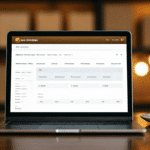Why Strong Passwords are Essential for Your UPS Account
Your UPS account holds critical information, including billing and shipping addresses, payment details, and package tracking information. Securing your account with a strong password is vital to protect this sensitive data from unauthorized access and potential fraudulent activities.
Protecting Sensitive Information
A compromised UPS account can lead to the theft of personal and financial information. Hackers can misuse this data for fraudulent purchases or identity theft, causing significant financial and personal harm.
Safeguarding Your Reputation
If a hacker gains access to your UPS account and engages in malicious activities, such as sending fraudulent packages, it can tarnish your personal and professional reputation, leading to long-term consequences.
Preventing Multi-Account Compromise
Using a strong and unique password for your UPS account helps prevent attackers from accessing multiple accounts if they attempt to use your UPS credentials elsewhere. This is crucial in maintaining overall online security.
Risks Associated with Weak Passwords and Prevention Strategies
Weak passwords make it easier for hackers to gain access to your UPS account, leading to unauthorized activities and data breaches. Understanding these risks and implementing effective prevention strategies is essential for maintaining account security.
Common Risks of Weak Passwords
- Unauthorized access to personal and financial information.
- Fraudulent activities, including unauthorized shipping and billing.
- Damage to personal and professional reputation.
- Potential legal and financial repercussions.
Prevention Strategies
To mitigate these risks, adopt the following strategies:
- Create complex and unique passwords for each account.
- Regularly update your passwords to enhance security.
- Enable two-factor authentication for an added layer of protection.
- Educate yourself and your team about common security threats.
Creating and Managing Strong, Memorable Passwords
Developing strong yet memorable passwords is a balancing act that ensures both security and ease of use. Implementing specific techniques can help you achieve this balance effectively.
Techniques for Strong Passwords
- Use a combination of uppercase and lowercase letters, numbers, and symbols.
- Create passphrases that combine unrelated words, making them easier to remember.
- Avoid using easily guessable information, such as names or dates.
- Ensure passwords are at least 12 characters long for enhanced security.
Implementing a Password Rotation Policy
Regularly changing your passwords reduces the risk of long-term unauthorized access. Aim to update your passwords every three to six months or immediately if a compromise is suspected.
Best Practices for Password Management and Storage
Properly managing and securely storing your passwords are critical components of maintaining account security. Adhering to best practices ensures that your credentials remain protected against unauthorized access.
Using Password Managers
Password managers are tools that securely store and organize your passwords, allowing you to use complex and unique passwords without the need to remember each one individually. They often include features like password generation and automatic form filling.
Secure Storage Solutions
If you prefer not to use a password manager, consider writing down your passwords and storing them in a secure location, such as a locked drawer or a safe. Avoid keeping passwords in plain text files or easily accessible digital notes.
Unique Passwords for Each Account
Reusing passwords across multiple accounts increases the risk of widespread compromise. Ensure that each account, especially your UPS account, has a unique password to contain potential breaches.
Advanced Security Measures: Two-Factor Authentication and Password Managers
Enhancing your account security involves implementing advanced measures that go beyond just a strong password. Two-factor authentication (2FA) and password managers are effective tools in this endeavor.
Two-Factor Authentication (2FA)
2FA adds an extra layer of security by requiring a second form of verification, such as a code sent to your mobile device, in addition to your password. This makes it significantly harder for unauthorized users to access your account.
Benefits of Password Managers
Password managers not only store your passwords securely but also generate strong, unique passwords for each of your accounts. This reduces the cognitive load of remembering multiple complex passwords and enhances overall security.
Responding to Password Compromises and Recovery Procedures
In the event that your UPS account password is compromised, swift action is necessary to prevent further unauthorized access and mitigate potential damage.
Steps to Take If Your Password Is Compromised
- Immediately change your UPS account password to a new, strong one.
- Review your account activity for any unauthorized transactions or changes.
- Enable two-factor authentication if it’s not already active.
- Notify UPS customer service of the suspected compromise for additional support.
Recovering a Forgotten Password
If you forget your UPS password, use the "Forgot Password" feature on the UPS login page. Follow the prompts to verify your identity and reset your password securely.
Avoiding Common Password Mistakes
Avoiding common pitfalls when creating and managing passwords is essential for maintaining robust account security. Recognizing and steering clear of these mistakes can significantly reduce the risk of unauthorized access.
Top 10 Most Commonly Used UPS Account Passwords to Avoid
- 123456
- password
- ups123
- shipping
- admin
- qwerty
- letmein
- 123456789
- hello
- login
Using any of these common passwords makes your account highly vulnerable to hacking attempts. Instead, strive to create unique and complex passwords as outlined in our best practices.
Other Common Mistakes
- Using easily guessable information like your name or birthday.
- Reusing the same password across multiple accounts.
- Neglecting to update passwords regularly.
- Ignoring password strength requirements.
Enhancing Account Security with Two-Factor Authentication
Two-factor authentication (2FA) is an effective method to bolster the security of your UPS account by requiring two forms of verification before granting access.
How Two-Factor Authentication Works
2FA typically involves entering your password (first factor) and then approving a login attempt via a code sent to your mobile device or email (second factor). This ensures that even if your password is compromised, unauthorized access is still prevented.
Benefits of Two-Factor Authentication
- Significantly reduces the risk of unauthorized account access.
- Protects against phishing attacks by requiring a secondary verification step.
- Provides peace of mind when accessing your account from public or unsecured networks.
Ensuring Your UPS Account is Secure: Regularly Checking for Suspicious Activity
Maintaining the security of your UPS account involves ongoing vigilance. Regularly monitoring your account for any unusual activity can help you detect and respond to potential security threats promptly.
Monitoring Account Activity
- Review transaction history and shipping details for any unauthorized changes.
- Check for unfamiliar login locations or devices accessing your account.
- Set up account alerts to notify you of significant account activities.
Immediate Actions if Suspicious Activity Is Detected
If you notice any suspicious activity, take immediate action by changing your password, enabling two-factor authentication, and contacting UPS customer support to secure your account further.
Educating Your Team on the Importance of Strong Passwords
Ensuring that your team understands and implements strong password practices is crucial for the collective security of your UPS account and related systems.
Implementing Company-Wide Password Policies
- Establish guidelines for creating and managing strong passwords.
- Mandate regular password updates and the use of unique passwords for different accounts.
- Restrict the sharing of passwords and enforce the use of password managers.
Providing Training and Resources
Offer training sessions and resources to educate your team members about the latest security threats, best practices for password creation, and the importance of maintaining account security.




















